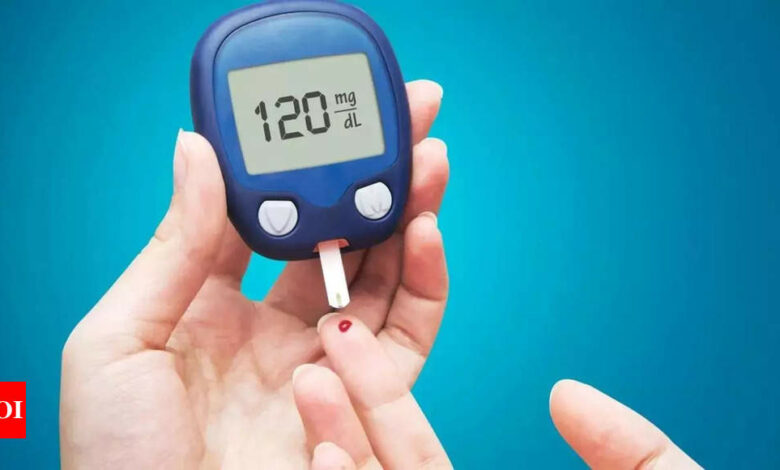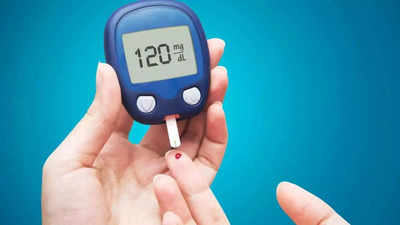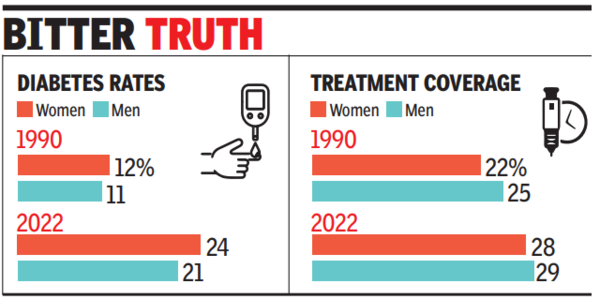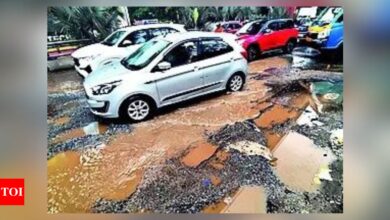India
Capital of untreated diabetes in India: Lancet | India News – Times of India




According to the study, an estimated 828 million adults (ages 18 and older) had diabetes by 2022. Of these, over a quarter (212 million) lived in India, followed by 148 million in China, 42 million in the US, 36 million in Pakistan, 25 million in Indonesia and 22 million in Brazil.
The study was conducted by the NCD Risk Factor Collaboration (NCD-RisC) – a global network of health scientists providing rigorous and up-to-date data on risk factors for non-communicable diseases (NCDs) for 200 countries and territories, in collaboration with WHO. .

Senior author Professor Majid Ezzati from Imperial College London said the study highlights growing global diabetes inequalities, with treatment rates stagnating in many low- and middle-income countries where the number of adults with diabetes is increasing dramatically.
“This is particularly concerning because people with diabetes in low-income countries are often younger and, in the absence of effective treatment, are at risk of lifelong complications – including amputation, heart disease, kidney damage or vision loss – or in some cases premature death.” , Ezzati said.
According to the study global diabetes rates doubled between 1990 and 2022 among men (6.8% to 14.3%) and women (6.9% to 13.9%). Low- and middle-income countries (LMICs) saw the largest increases, while some higher-income countries such as Japan, Canada and some countries in Western Europe (e.g. France, Spain and Denmark) saw no change or even a small decline in the last thirty years number of diabetes patients.
In India, the researchers found, diabetes rates have almost doubled in women and men. In women it rose from 11.9% in 1990 to 24% in 2022. In men it rose from 11.3% to 21.4% in the corresponding period. In comparison, treatment coverage increased only marginally for both sexes; 21.6% to 27.8% in women between 1990 and 2022 and 25.3% to 29.3% in men during the same period.
Dr Sachin Kumar JainProfessor and HOD, Department of Endocrinology, Amrita Hospital, Faridabad, said India’s status is a sobering reality and highlights an urgent public health challenge. “
The reasons behind this situation are multifactorial: limited access to healthcare facilities, socio-economic constraints, cultural perceptions and lack of awareness about diabetes,” he said. “From my experience as an endocrinologist, early detection and continuous care can dramatically change diabetes outcomes. . Collaborative efforts between government agencies, healthcare professionals and community-based organizations are critical to reducing the burden of untreated diabetes in India, improving health literacy and delivering timely, equitable care across all regions.”
Dr. Anoop Misra, chairman Fortis C-Doc, told TOI that untreated diabetes is a serious problem. However, he added that it is unlikely that treatment coverage will be less than 30%, as shown by the Lancet study. “Many people turn to alternative therapies, some self-medicate and there are many others who try to manage the condition by changing their lifestyle until the condition worsens. This is all true and requires urgent action,” he said.




